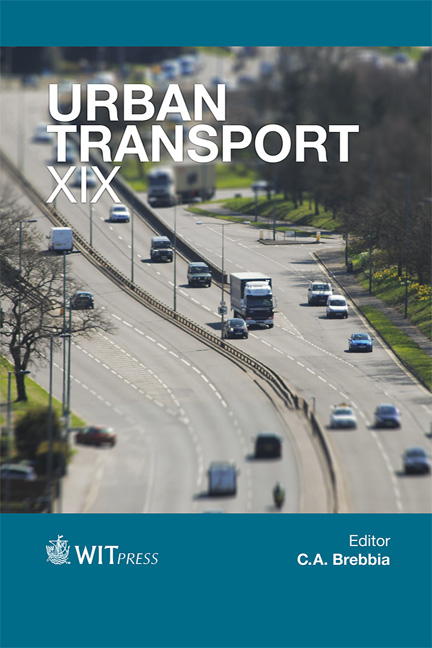Guidance Effect Of A Parking Guidance System In A Middle-wide Range Area
Price
Free (open access)
Transaction
Volume
130
Pages
11
Page Range
241 - 251
Published
2013
Size
514 kb
Paper DOI
10.2495/UT130191
Copyright
WIT Press
Author(s)
T. Katori, K. Tatematsu & T. Izumi
Abstract
In this paper, we describe the guidance effects of a parking guidance system by traffic simulator. First, to compare the guidance effects of the systems, we constructed a cellautomaton- simulator. To purely evaluate the guidance effect by the simulator, we measured the total time for a round trip between origin and destination, without other traffic passing. A driver’s parking choice is based on Katori et al.’s \“Comparison between automatic distribution and driver’s feature in parking guidance system”, 2006. If a driver has no knowledge concerning parking availability, in other words, if there is no parking guidance system, the driver chooses a nearest parking spot from his own destination. If drivers are provided with information by information boards, they consider the parking situation (full congested or empty), and they choose a parking location. The parking situation information is renewed at each intersection where the boards stand. We define the \“driver’s parking choice” as a combination of information about the parking situation, destination and car park location. We compare the guidance effects under these circumstances. The area under consideration is east Tokyo to west Chiba along the Edogawa River, and this area includes some living zones. The parking lots in this area are managed by the parking situation information system, and we show the quantitative evaluation values of the guidance effect. Keywords: parking guidance system, guide effect, driver’s park choice, cell automaton simulator, middle wide area.
Keywords
Keywords: parking guidance system, guide effect, driver’s park choice, cell automaton simulator, middle wide area.





